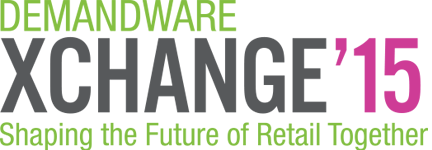Last week I attended Demandware’s XChange Conference in Las Vegas. Two themes struck me coming out of the event: one, the convergence of content and commerce is happening fast, and two, the convergence of eCommerce and point of sale is not happening quite as fast, but it easily promises to be the bigger deal of the two.
Let’s take them one at a time…
Content And Commerce. The convergence between content and commerce has been a long time in the making. I wish I could say that retailers have been pushing vendors to get their systems to be more converged, and that this is the hold-up, but that wouldn’t be true. This is a case where process, technology, and organization have all developed and evolved together. Retailers now see the end-game and want to race toward the finish line, which might be easy to interpret as retailers pushing vendors, but I feel like it has only been in the last year or so that retailers even knew – really knew at a detailed level – what it means to converge content and commerce.
So let’s start there. I define the convergence of content and commerce as working to provide the right content to support the shopper journey from discovery through to conversion. For most retailers, while there has been a lot of investment in content to support the early stages of the shopper journey – lifestyle content and blogs, for example – if that content inspires a shopper to act, there usually is very little connection between the content and the products featured in that content.
It’s easy to find examples of this disconnect – a “looks for spring” blog post that doesn’t link back to any of the items featured in the post, or worse, leads to out of stock items. Or a how-to article describing ways to spruce up the backyard, which doesn’t lead to any of the items featured in the article. It doesn’t matter what retail vertical you’re in – how about the recipe that doesn’t link to any ingredients?
The reason for this disconnect has been a disconnect in teams. Product or merchandising teams have been responsible for the “product” section of the site, and marketing teams have been responsible for the “content” section of the site. And rarely have the two spent much time together – until now.
Retailers are starting to experiment with content alongside products, all merchandised on pages based on content themes. For example, LUSH, a personal care and cosmetics retailer, might display a category page based on ingredients rather than the typical breakdown of shampoo vs. body soap etc. So a page might merchandise all kinds of products based on the ingredient “honey”, and interspersed in those pages are content blocks which feature things like articles about honey’s skin care benefits, or a video showing how to use a honey-based deep conditioner. Right now you can see it in action on their home page (link above), but it’s coming soon deeper within the site.
At the conference, retailers’ interest in this capability was extremely high, and the fact that it is now available in Demandware’s platform was eagerly received. But the good retailers – the ones who know that it is a mistake to let technology changes drive organizational change – are taking a hard look at how their teams are organized. And more and more of them are talking about Agile and Scrum not in the context of software development, but in the context of projects. Projects like converging commerce and content – bringing together highly focused teams to work intensely on short timeline projects with focused, defined outcomes.
Content and commerce may feel in some ways like a natural combination – “why didn’t we do that before?” – but the reality is, it appears to have far-reaching implications, as the organizational change questions demonstrate. Which is why it isn’t as easy as it looks.
Commerce And POS Convergence. Unlike content and commerce, nobody seems to think that the convergence between commerce (as in “eCommerce”) and point of sale looks easy at all. And unlike with content and commerce, retailers appear to be waiting to see what vendors will do before they make a lot of commitments to a strategy of convergence.
I think convergence will happen, though. We’ve seen in our store and eCommerce studies that retailers were uncertain as to whether eCom as a platform could step up and take on all commerce anywhere, but the last couple of years has seen more certainty from our survey takers – they want as much commerce common no matter the channel as they can get, and they’ll deal with the rest. That means price, item, customer, promotion (to some degree), loyalty, etc.
It also means a real opportunity for Demandware, one of a handful of vendors out there that can legitimately claim both eCommerce and now also point of sale. In this case, customers are patient. They are holding on to their existing POS investments a little longer than they would like because they’d rather struggle along for now and wait until the future of this convergence is clear, than jump early and miss the boat.
But, as we talked about in a panel session at the conference, that doesn’t mean that retailers are holding still. There are a lot of “surround” strategies in play in retail right now, where eCommerce is being extended to surround POS – extended as assisted selling or endless aisle, extended as clienteling or other employee-facing apps related to customers. Extended as a stand-alone mobile POS, which may someday grow up to be THE POS, across all channels.
The challenge here is that it really is as hard as it looks. The good news is, retailers, for all that they want it, don’t seem to be rushing in. Which puts Demandware in a pretty good spot.


